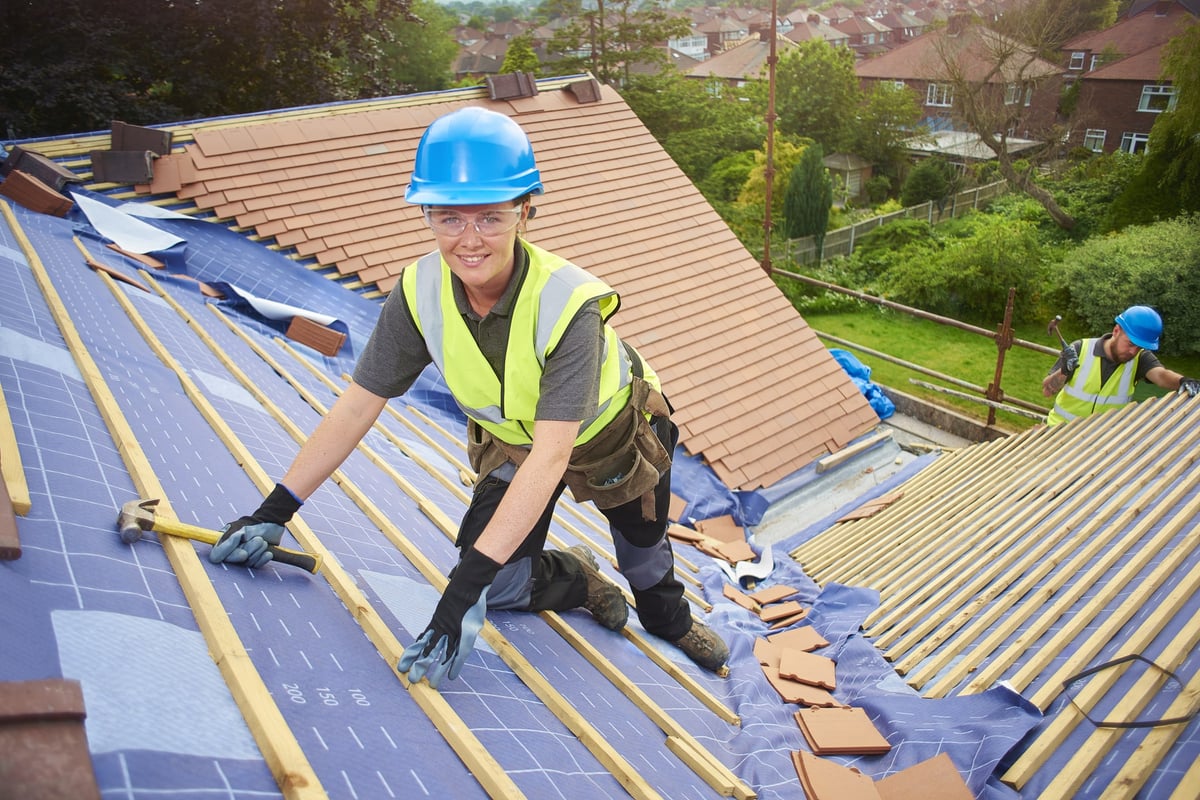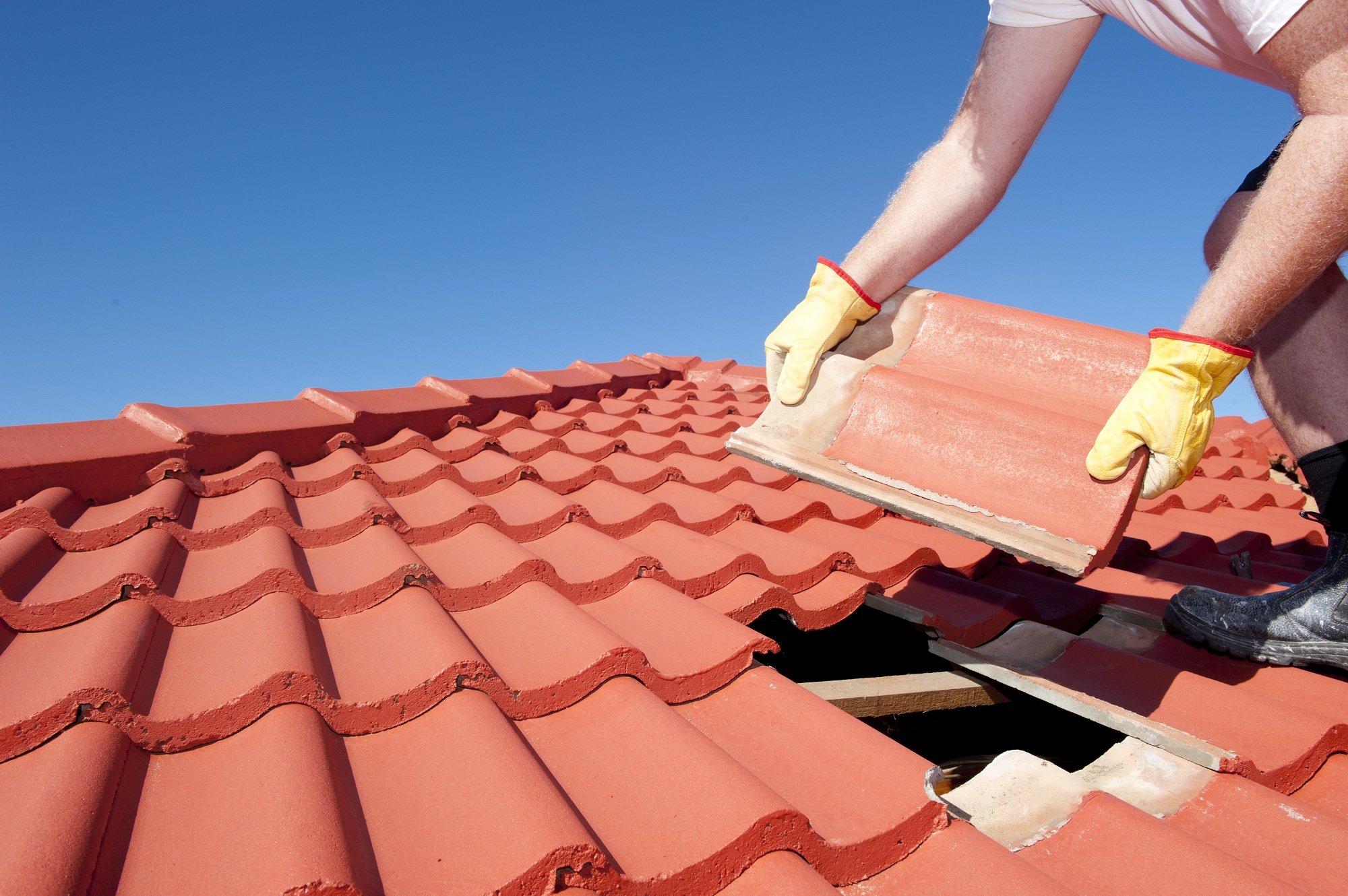A Comprehensive Guide to Different Roof Covering Kinds and Layouts for every single Residential or commercial property
The option of roofing system kind is necessary for any kind of building. Each style supplies distinctive advantages, from aesthetic interest architectural integrity. Gabled roof coverings show classic appeal, while level roofing systems provide a modern-day touch. Comprehending the subtleties of numerous roof covering designs can greatly affect a home owner's decision. This overview supplies insights into each option, highlighting their unique qualities and benefits. What might be the very best option for your property?
Gabled Roofs: Standard Appeal and Versatility
Various roofing system styles exist, gabled roof coverings stand out for their traditional charm and adaptability. Characterized by their triangular shape developed by 2 sloping sides, gabled roof coverings can be found in countless architectural styles, from standard cottages to modern homes. This style not just enhances the visual value of a residential or commercial property but additionally enhances air flow and water drainage, properly shedding rain and snow.
Gabled roofing systems come in various setups, including front gables, side gables, and go across gables, allowing home owners to select a design that enhances their design vision. Furthermore, they are relatively very easy to construct, which can result in set you back financial savings during the building process. The versatility of gabled roofing systems makes them suitable for varied climates, as their steep inclines assist stop water build-up. Overall, gabled roofing systems stay a preferred choice for home owners and contractors looking for a harmonious mix of performance and ageless elegance.
Flat Roofs: Modern Aesthetics and Functionality
While lots of house owners gravitate in the direction of typical roofing system styles, flat roofings supply a modern aesthetic and functional advantages that interest modern architecture. These roofs supply a smooth, minimalist look that complements urban environments and modern layouts. The horizontal aircraft permits flexible usage of room, making it possible for home owners to produce rooftop yards, balconies, or additional living locations.
Flat roofing systems are also cost-efficient, needing fewer materials and much less labor during installation contrasted to pitched roofing systems. Their simpleness can result in lowered maintenance costs gradually. In addition, level roofs assist in simple access for upkeep and examinations, making them a practical selection for commercial homes.

Hip Roofing Systems: Stability and Improved Drain
Hip roof coverings, identified by their sloping sides that merge on top, offer both security and improved drainage for household frameworks. This design lessens the danger of water merging on the roof surface, as the tilted inclines enable rain and snow to move off successfully. The symmetrical nature of hip roofs additionally adds to structural stability, distributing weight evenly across all 4 sides, which is particularly advantageous in locations susceptible to high winds or hefty snowfall.
Additionally, hip roofing systems can provide boosted living area with the potential for vaulted ceilings and even attic conversions. Their style can accommodate numerous roof covering materials, enabling for aesthetic adaptability (lake tapps roofers). On the whole, hip roofing systems are a practical selection for property owners seeking a balance in between capability and style, making certain resilience versus the aspects while enhancing the property's general aesthetic allure
Mansard Roofs: Elegant Layout With Additional Living Area
Mansard roofing systems are defined by their unique dual-pitched design, offering a blend of style and functionality. This building design not just boosts the aesthetic charm of a building but also supplies substantial added space within the top level. House owners commonly value the flexibility and potential for customization that mansard roof coverings existing.
Style Characteristics of Mansard
The distinctive shape of a mansard roofing catches focus with its elegant lines and double slopes on each side. This building design features a high lower incline that often consists of dormer windows, creating a striking visual effect. The top slope, which is much less high, is somewhat sloped or normally level, allowing for an unique account that boosts the total aesthetic of the building. Mansard roofing systems are often identified by their use of different materials, including slate, floor tile, or steel, supplying adaptability in style. The style permits boosted headroom in the top floor, making it suitable for numerous building designs, from timeless to modern-day. In general, the mansard roofing exemplifies a blend of functionality and advanced layout.
Benefits of Additional Space
Many home owners value the special benefit that mansard roofing systems use in taking full advantage of usable room within a framework. This architectural style features a double-pitched roof covering, offering extra headroom description and the capacity for added living areas such as bedrooms, workplaces, or leisure spaces. The upper degree can be conveniently exchanged practical areas, improving building value and flexibility. Furthermore, the style permits larger home windows and increased all-natural light, developing a welcoming environment. Mansard roofings also enable homeowners to maintain a typical visual while reaping modern benefits, making them particularly appealing for those looking for a mix of sophistication and practicality. Generally, these roofing systems supply both design and functionality, making them a prominent selection for numerous properties.
Lost Roofs: Minimal Style and Effectiveness
While some may ignore their simpleness, lost roofs offer a distinct blend of minimalist design and practical performance. Defined by a solitary sloping surface area, these roofs are both uncomplicated and visually pleasing, making them a prominent choice for modern-day style. The clean lines of a shed roofing contribute to a modern appearance, commonly matching numerous building designs.
Along with their visual charm, shed roofings are extremely reliable. Their slope enables for effective rain drainage, minimizing the risk of leaks and water accumulation. This layout also promotes the installment of skylights, enhancing natural light within the area. Moreover, lost roofs are economical, as they call for fewer products and labor compared to extra intricate roof.
Dome Roofs: Special Style and Energy Effectiveness
Dome roof coverings provide an unique architectural style that establishes them in addition to traditional roofing designs, boosting the aesthetic charm of any kind of framework. Along with their visual individuality, these roofings are known for their power efficiency, as their form advertises all-natural air flow and minimizes warmth build-up. Nevertheless, the building and construction of dome roofs provides particular structural difficulties that have to be meticulously taken into consideration during the layout phase.
Building Aesthetics and Appeal
The attraction of dome roofs depends on their unique building design, which perfectly blends visual allure with useful benefits. These roof coverings create a striking aesthetic effect, commonly offering as the prime focus of different structures. Their rounded type stimulates a sense of elegance, permitting innovative expression in both household and business buildings. Additionally, dome roof coverings can integrate with diverse building styles, from standard to modern-day, improving general residential or commercial property worth. The spacious interior created by the dome shape allows ingenious style opportunities, cultivating an inviting ambience. Furthermore, the distinct shape of dome roofs makes them a preferred option for social and public structures, representing unity and security while enchanting the creative imagination of viewers.
Energy Effectiveness Benefits
Cutting-edge architectural features usually come with included functional benefits, and dome roofs exemplify this by improving energy performance. The rounded form of dome roofings enables ideal air circulation, lowering the reliance on home heating and cooling down systems. This design decreases surface exposed to exterior components, causing lower power loss compared to conventional flat or angled roofs. In addition, dome roofings can efficiently suit insulation products, better enhancing thermal efficiency. Their capacity to show sunlight can also imp source reduce heat absorption, keeping interiors cooler during warm months. Additionally, the structural honesty of dome roofs permits making use of lasting materials, making them a green selection. Overall, dome roofing systems supply a special combination of aesthetic allure and energy-saving advantages for homeowner.
Structural Factors To Consider and Difficulties
While dome roofing systems provide numerous energy effectiveness advantages, they likewise present special structural factors to consider and challenges that have to be addressed throughout design and construction. The curvature of dome roofings calls for careful design to disperse weight evenly, which can make complex the structural structure. In addition, products need to be picked for their ability to withstand diverse climate condition, including wind uplift and snow lots. The building and construction process might demand customized techniques and knowledgeable labor to assure appropriate setting up, usually enhancing job prices. Furthermore, incorporating plumbing, electrical systems, and insulation right into the curved surface area can pose extra challenges. Generally, a detailed understanding of these aspects is vital for accomplishing the preferred aesthetic and practical results in dome roofing layouts.
Regularly Asked Inquiries
Just How Do Roof Enters Affect Home Insurance Premiums?
Roof covering kinds substantially affect home insurance policy premiums, as insurance firms assess threat factors like sturdiness, fire resistance, and weather condition performance. roof repair lake tapps wa. Houses with sturdier roofings frequently appreciate lower costs, while much less trusted materials other may result in higher expenses
What Materials Are Finest for each and every Roof Covering Type?
Typical roofing products consist of asphalt tiles for sloped roofs, metal for longevity, clay ceramic tiles for aesthetic appeals, and slate for long life. Each product supplies unique advantages, influencing factors like insulation, upkeep, and total resilience.
How Does Environment Impact Roofing Layout Choices?
Environment considerably affects roof layout choices, as regions with hefty snowfall need steep inclines for drainage, while locations with heats might take advantage of materials that show heat. Humidity additionally dictates air flow demands and material toughness.

Can I Change My Roof Type Later?
Yes, changing a roof kind later on is feasible, however it entails cautious consideration of architectural integrity, regional guidelines, and cost. Home owners ought to get in touch with specialists to guarantee proper implementation and compliance with building codes.
What Is the Average Lifespan of Different Roofings?
The typical life-span of roofs varies: asphalt shingles last 15-30 years, metal roofs can withstand 40-70 years, while floor tile and slate roof coverings might last as much as 100 years, relying on upkeep and environmental elements.
Gabled roofs emanate traditional beauty, while level roofings offer a modern-day touch. Various roofing designs exist, gabled roofings stand out for their timeless allure and flexibility. While lots of house owners move towards standard roofing designs, level roofs offer a contemporary aesthetic and useful advantages that appeal to contemporary architecture. Flat roof coverings are also cost-efficient, requiring less materials and much less labor during setup contrasted to pitched roof coverings. Dome roofs offer a distinct architectural style that establishes them apart from conventional roofing styles, enhancing the aesthetic allure of any type of framework.